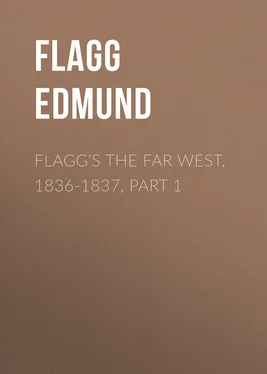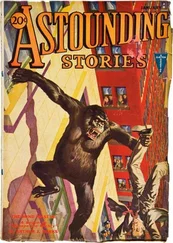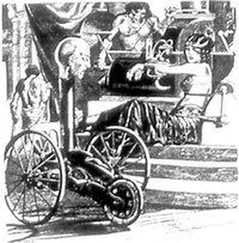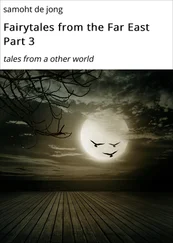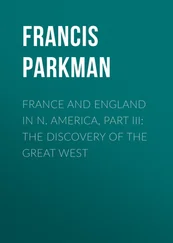Edmund Flagg - Flagg's The Far West, 1836-1837, part 1
Здесь есть возможность читать онлайн «Edmund Flagg - Flagg's The Far West, 1836-1837, part 1» — ознакомительный отрывок электронной книги совершенно бесплатно, а после прочтения отрывка купить полную версию. В некоторых случаях можно слушать аудио, скачать через торрент в формате fb2 и присутствует краткое содержание. Издательство: Иностранный паблик, Жанр: foreign_antique, foreign_prose, Путешествия и география, на английском языке. Описание произведения, (предисловие) а так же отзывы посетителей доступны на портале библиотеки ЛибКат.
- Название:Flagg's The Far West, 1836-1837, part 1
- Автор:
- Издательство:Иностранный паблик
- Жанр:
- Год:неизвестен
- ISBN:нет данных
- Рейтинг книги:4 / 5. Голосов: 1
-
Избранное:Добавить в избранное
- Отзывы:
-
Ваша оценка:
- 80
- 1
- 2
- 3
- 4
- 5
Flagg's The Far West, 1836-1837, part 1: краткое содержание, описание и аннотация
Предлагаем к чтению аннотацию, описание, краткое содержание или предисловие (зависит от того, что написал сам автор книги «Flagg's The Far West, 1836-1837, part 1»). Если вы не нашли необходимую информацию о книге — напишите в комментариях, мы постараемся отыскать её.
Flagg's The Far West, 1836-1837, part 1 — читать онлайн ознакомительный отрывок
Ниже представлен текст книги, разбитый по страницам. Система сохранения места последней прочитанной страницы, позволяет с удобством читать онлайн бесплатно книгу «Flagg's The Far West, 1836-1837, part 1», без необходимости каждый раз заново искать на чём Вы остановились. Поставьте закладку, и сможете в любой момент перейти на страницу, на которой закончили чтение.
Интервал:
Закладка:
81
D'Ulloa, the first Spanish governor of Louisiana, sent a detachment of soldiers to St. Louis in 1767. Later, these troops were transferred to the south bank of the Missouri, a few miles above its mouth, where "Old Fort St. Charles the Prince" was erected. General Wilkinson built Fort Bellefontaine on this site in 1805. From 1809 to 1815 this was the headquarters of the military department of Louisiana (including Forts Madison, Massac, Osage, and Vincennes). It was the starting point of the Pike, Long, and Atkinson expeditions. On July 10, 1826, it was abandoned for Jefferson Barracks, but a small arsenal of deposits was maintained here until 1834. The land was eventually sold by the government (1836). See Walter B. Douglas's note in Thwaites, Original Journals of the Lewis and Clark Expedition (New York, 1905), v, pp. 392, 393. – Ed.
82
North of Missouri River, twenty miles above its confluence with the Mississippi, where the bluffs of the two streams unite, two smooth, treeless, grass-covered mounds stand out from the main bluffs. These mounds, a hundred and fifty feet in height, were called by the early French "mamelles" from their fancied resemblance to the human breast. – Ed.
83
Alton, twenty-five miles above St. Louis, is the principal city of Madison County, Illinois. In 1807 the French erected here a small trading post. Rufus Easton laid out the town (1818), and named it for his son. The state penitentiary was first built at Alton (1827), but the last prisoner was transferred (1860) to the new penitentiary at Joliet, begun in 1857. Alton was the scene of the famous anti-Abolitionist riot of November 7, 1837, when Elijah P. Lovejoy was killed. – Ed.
84
Captain Benjamin Godfrey donated fifteen acres of land and thirty-five thousand dollars for the erection of a female seminary at Godfrey, Madison County, Illinois. The school was opened April 11, 1838, under the title of the Monticello Female Seminary, with Rev. Theron Baldwin for its first principal. – Ed.
85
The plans mentioned here were probably being agitated when Flagg visited Alton in 1836. The act incorporating the first railroad in Illinois was approved January 17, 1835; it provided for the construction of a road from Chicago to a point opposite Vincennes. By the internal improvement act of February 27, 1837, a road was authorized to be constructed from Alton to Terre Haute, by way of Shelbyville, and another from Alton to Mount Carmel, by way of Salem, Marion County; but the act was repealed before the roads were completed. The Cumberland road was constructed only to Vandalia, Fayette County, though the internal improvement act contemplated its extension to St. Louis. – Ed.
86
The French village is no doubt Portage des Sioux. In 1799 Francis Leseuer, a resident of St. Charles, visited the place, which was then an Indian settlement. Pleased with the location he returned to St. Charles, and secured a grant of the land from Don Carlos Dehault Delassus, lieutenant-governor of Upper Louisiana, organized a colony from among the French inhabitants of St. Charles and St. Louis, and occupied the place the same autumn. – Ed.
87
Grafton, Jersey County, Illinois, was settled in 1832 by James Mason, and named by him in honor of his native place. It was laid out (1836) by Paris and Sarah Mason. – Ed.
88
The Illinois Indians (from "Illini," meaning "men") were of Algonquian stock, and formerly occupied the state to which they gave the name. They were loyal to the French during their early wars, later aided the English, and were with great difficulty subdued by the United States government. Separate tribes of the Illinois Indians were the Cahokia, Kaskaskia, Michigami, Moingewena, Peoria, and Tamaroa.
On a high bluff just above Alton there was formerly to be seen a huge painted image known among the Indians as the Piasa Bird. To the natives it was an object of much veneration, and in time many superstitions became connected therewith. First described in the Journal of Father Jacques Marquette (1673) its origin was long a subject of speculation among early writers. Traces of this strange painting could be seen until 1840 or 1845, when they were entirely obliterated through quarrying. See P. A. Armstrong, The Piasa or the Devil among the Indians (Morris, Illinois, 1887).
The version of the tradition given by Flagg was probably from the pen of John Russell, who in 1837 began editing at Grafton, Illinois, the Backwoodsman , a local newspaper. Russell had in 1819 or 1820 published in the Missourian an article entitled "Venomous Worm," which won for him considerable reputation. Russell admitted that the version was largely imaginative; nevertheless it had a wide circulation. – Ed.
89
For a sketch of Tonty, see Nuttall's Journal , in our volume xiii, p. 117, note 85. – Ed.
90
Beardstone, Cass County, Illinois, was laid out by Thomas Beard and Enoch Marsh (1827). During the Black Hawk War (1832), it was the principal supply base for the Illinois volunteers. – Ed.
91
For an account of the Illinois Canal, see Flint's Letters , in our volume ix, p. 186, note 93. – Ed.
92
By act of Congress approved May 6, 1812, three tracts of land, not exceeding on the whole six million acres, were authorized to be surveyed and used as a bounty for the soldiers engaged in the war begun with Great Britain in that year. The tract surveyed in Illinois Territory comprehended the land lying between the Mississippi and Illinois rivers, extending seven miles north of Quincy, on the former stream, and to the present village of De Pue, in southeastern Bureau County, on the latter; it embraced the present counties of Calhoun, Pike, Adams, Brown, Schuyler, Hancock, McDonough, Fulton, Peoria, Stark, Knox, Warren, Henderson, and Mercer, and parts of Henry, Bureau, Putnam, and Marshall. – Ed.
93
Cap au Gris was a point of land on the Mississippi, in Calhoun County, Illinois, just above the mouth of the Illinois. J. M. Peck, in his Gazetteer of Illinois (1837), from which Flagg derives his account of this place, says that a settlement had been formed there about forty years earlier. The town of this name is now in Lincoln County, Missouri. There is no foundation for the belief that La Salle had erected a fort here. – Ed.
94
Montgomery, on the right bank of Illinois River, in Pike County, was laid out by an Alton Company, for a new landing. Naples is a small village in Scott County. Havana, founded in 1827, is the seat of justice for Mason County. Pekin is in Tazewell County. – Ed.
95
Peoria, now the second largest city in Illinois, is situated a hundred and sixty miles southwest of Chicago, on the west bank and near the outlet of Lake Peoria, an expansion of the Illinois River. Its site was visited in 1680 by La Salle. Early in the eighteenth century a French settlement was made a mile and a half farther up, and named Peoria for the local Indian tribe. French missionaries were in this neighborhood as early as 1673-74. In 1788 or 1789 the first house was built on the present site of Peoria and by the close of the century the inhabitants of the old town, because of its more healthful location, moved to the new village of Peoria, which at first was called La Ville de Maillet, in honor of a French Canadian who commanded a company of volunteers in the War of the Revolution. Later the name was changed to its present form. At the opening of the War of 1812-15, the French inhabitants were charged with having aroused the Indians against the Americans in Illinois. Governor Ninian Edwards ordered Thomas E. Craig, captain of a company of Illinois militia, to proceed up the Illinois River and build a fort at Peoria. Under the pretense that his men had been fired upon by the inhabitants, when the former were peaceably passing in their boats, Craig burned half the town of Peoria in November, 1812, and transferred the majority of the population to below Alton. In the following year, Fort Clark – named in honor of General George Rogers Clark – was erected by General Benjamin Howard on this site; but after the close of the war the fort was burned by the Indians. After the affair of 1812, Peoria was not occupied, save occasionally, until 1819, when it was rebuilt by the Americans. The American Fur Company established a post there in 1824. See C. Ballance, History of Peoria (Peoria, 1870). – Ed.
Читать дальшеИнтервал:
Закладка:
Похожие книги на «Flagg's The Far West, 1836-1837, part 1»
Представляем Вашему вниманию похожие книги на «Flagg's The Far West, 1836-1837, part 1» списком для выбора. Мы отобрали схожую по названию и смыслу литературу в надежде предоставить читателям больше вариантов отыскать новые, интересные, ещё непрочитанные произведения.
Обсуждение, отзывы о книге «Flagg's The Far West, 1836-1837, part 1» и просто собственные мнения читателей. Оставьте ваши комментарии, напишите, что Вы думаете о произведении, его смысле или главных героях. Укажите что конкретно понравилось, а что нет, и почему Вы так считаете.
